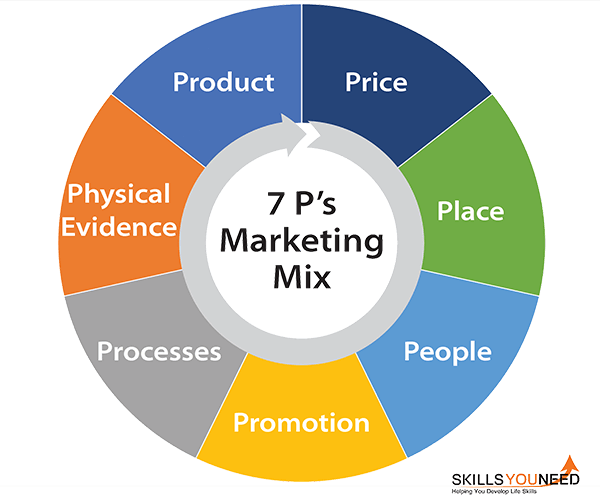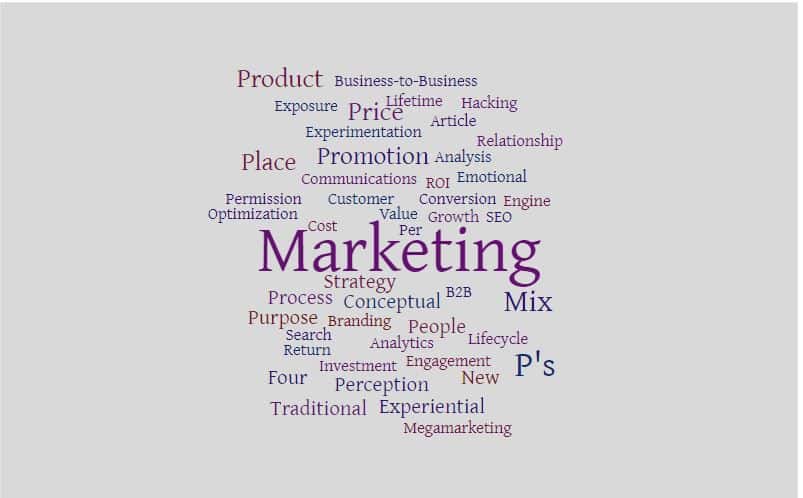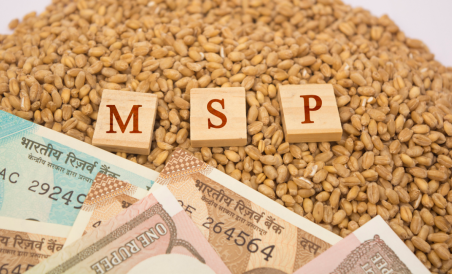Introduction
A marketing mix includes multiple areas of focus as part of a comprehensive marketing plan. The term often refers to a common classification that began with the four P’s of Marketing: product, price, placement, and promotion.
Effective marketing touches on a broad range of areas as opposed to fixating on one message. Doing so helps reach a wider audience, and by keeping the four Ps in mind, marketing professionals are better able to maintain focus on the things that really matter. Focusing on a marketing mix helps organizations make strategic decisions when launching new products or revising existing products.

The four P’s are linked and work together. While various marketing concepts have been developed over time, the four P’s are the basis for every successful marketing strategy. The following is a breakdown of each P with examples.
Product
Products are commodities and services that solve problems and satisfy the needs of consumers. A product can be tangible, such as a vehicle or a piece of clothing, or intangible, such as a cruise or house cleaning service.
What is the product?
What does the product accomplish?
Does the product fulfill a need or provide a unique experience?
Who are the target customers for the product?
What differentiates the product from the competition?
Price
Price is the cost of the product that the consumer pays. During product marketing, it is important to set a price that reflects the current market trends and is affordable for consumers, yet at the same time is profitable for the business. Price can fluctuate based on the supply and demand and the product’s sales cycle. While some businesses might lower the price to compete with the market, others might inflate it – especially if they are promoting a luxury brand.
- How much do the competitors charge for similar products?
- What is the affordability and price range of target consumers?
- What is the lowest price that the product can sell for?
- What is the highest price that the product can sell for?
- What price is too high or too low for the target audience?
- What price is the best fit for the target market?
Place
This is where and how the product or service is purchased by the customers. It also entails where the product is stored and manufactured. Digital transformation has evolved how products are sold — online, small local shops or global producers. This marketing plan also considers where the product is advertised and in which format, such as magazines, online ads, radio, infomercials or film product placements.
- Which places or venues do buyers frequent for similar products and services?
- Where is the competition selling its products?
- What are the shopping habits of the target audience?
- Will the product placement and distribution require a sales team, the use of Salesforce or will it be self-service?
- How can the right distribution channels be accessed?
Promotion
Promotion refers to reaching the target audience with the right message at the right time. It gets the word out and is an effective way to conduct a sales promotion and connect with consumers. A promotional strategy aims to show consumers why they would need a certain product and the reasons for buying it over other products. The core of marketing communications, product promotions push out specific and meaningful advertising through popular channels: word-of-mouth seeding, social networking, Instagram campaigns, print marketing, television commercials, email marketing campaigns, social media marketing and more.
- When is the right time to reach the target audience?
- Which channels or mediums will the target audience get their information from?
- What advertising approaches will be the most fruitful for the target audience?
- Which channels are the most cost-effective and efficient for product promotion?
- Which part of the target audience should be engaged?
- Where are the competitors spending their advertising efforts and marketing revenue?
The 7Ps model is a marketing model that modifies the 4Ps model. As Marketing mix 4P is becoming an old trend, and nowadays, marketing business needs deep understanding of the rise in new technology and concept. So, 3 more new P’s were added in the old 4Ps model to give a deep understanding of the concept of the marketing mix.
People
The company’s employees are important in marketing because they are the ones who deliver the service to clients. It is important to hire and train the right people to deliver superior service to the clients, whether they run a support desk, customer service, copywriters, programmers…etc.
It is very important to find people who genuinely believe in the products or services that the particular business creates, as there is a huge chance of giving their best performance.
Process
We should always make sure that the business process is well structured and verified regularly to avoid mistakes and minimize costs. To maximize the profit, Its important to tighten up the enhancement process.
Physical Evidence
In the service industries, there should be physical evidence that the service was delivered. A concept of this is branding. For example, when you think of “fast food”, you think of KFC. When you think of sports, the names Nike and Adidas come to mind.

There are some new P’s added to the 7P’s in the Marketing Mix, for better understanding of the new market:
Proof (Social)
Do you buy products that have high or low rating? That’s what social proof is. The first to pioneer this is Amazon, where they allow customers to rate the books sold on the platform. As a result, more purchases happens when there’s a lot more ‘stars’. This applies to any other businesses. Highlight your satisfied customers, testimonials, even case studies.
Portfolio
This mostly applies to service industry, where there’s an outcome for the services rendered. For industry like mine, I normally show whom we’ve worked with and the websites that we’ve built. Printing, Cleaning, Painting, Public Speaking, Server installation, you get the drill.
Prestige
This P applies to product of higher perceived value especially luxury goods such as BMW Coupe, Prada Handbag, Brietling Watch, Vera Wang Bridal Gown and such. Not many brand can proof the ‘prestige’, a lot failed too. To play in this area, you’d need celebrities, world class athletes, high class people, Instagram famous to endorse your brand or even sponsor the FIFA World Cup
Productivity & Performance
This P is what it can do for customers. Let’s take the most cliché example, iPhone. Every year, they up the game, calling it the ‘fastest iPhone ever’, and we bought into it because there’s proof that it does perform better as well as increases your productivity. This P is especially good to show your product can do wonders for the users.
Packaged (Bundled Product)
Packaged, Bundled or Combo products, is quite similar to Price, except it’s more specific. Customers are more curious about what value for money they get if they spent a little bit more. Package should not be the exact product, it should be complementary products. For example, a travelling kit package consist of facial wash, moisturizer and eye cream.
Conclusion
Consumer-centric marketing is more cyclical. Reassessing the customers’ needs, communicating frequently, and developing strategies to build customer loyalty are the goals. Marketers often study consumers who frequently will influence strategies related to service or products. This also requires a strategy for communicating with consumers in terms of obtaining feedback and defining the type of feedback being sought.





